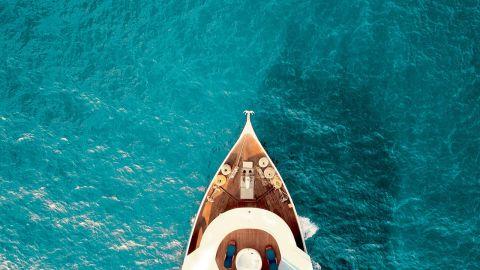The Ocean Clean Up Starts Here
We all know that too much plastic ends up in our oceans, it’s damaging wildlife and if we continue will adversely affect our entire ecosystem. Something has to be done.
Behaviour change is obviously key, removing single-use plastic from our everyday lives and ensuring we all dispose of plastics responsibly, every time. Meanwhile, extensive clean up operations are being conducted, coordinated by action groups along beaches, rivers, in forests and now in the Pacific Ocean.
The team over at The Ocean Cleanup are making great strides in doing something positive to make a difference. Their mission? To develop advanced technology to rid the world of the ocean’s plastic, ultimately reducing the concentration of plastics in the oceans by 90% in 2040.
Having undertaken 273 scale model tests, six at-sea prototypes, comprehensive mapping of the Great Pacific Garbage Patch with advanced technology, 30 vessels and a plane, they’re ready to put the world’s first ocean clean up system to the test.
‘System 001’ was launched, on tow, from San Francisco Bay, earlier this week. It’s first stop, 250 – 350 nautical miles offshore at an intermediary test site, here it will be installed in a u-shape configuration for a 2-week trial before heading on to start the clean up 1200 miles offshore.
Watched by many via an online livestream, this floating tube was towed through the bay, under the Golden Gate Bridge and out into the Pacific.
Beneath the tube is a 3 metre skirt, designed to move around in a C shape picking up plastic, without causing adverse effects on either the ocean or marine life. Once in position System 001 requires no propulsion, moving around naturally with the flow of the currents, wind and waves, passively sweeping up plastics and microplastics in its path.
To achieve a reduction in plastics of 50% in 5 years, The Ocean Cleanup team will need a fleet of 60 systems in operation by 2021, so it’s vital they closely test and monitor the success of System 001. Once they’ve brought the first batch of plastics back to shore, the plan is to analyse the data, prove the concept and use the information gathered to redesign the next generation of clean up systems.
As for the plastic itself, the team plan to work alongside their recycling partners to process it into desirable, durable products which will be sold to help fund future clean up operations and not end up back in the ocean.
The next few months are vital, the team will be continuously looking at the data from the vessel, data streams and the cleanup system to fine tune future clean up innovations.
For further information just visit https://www.theoceancleanup.com


